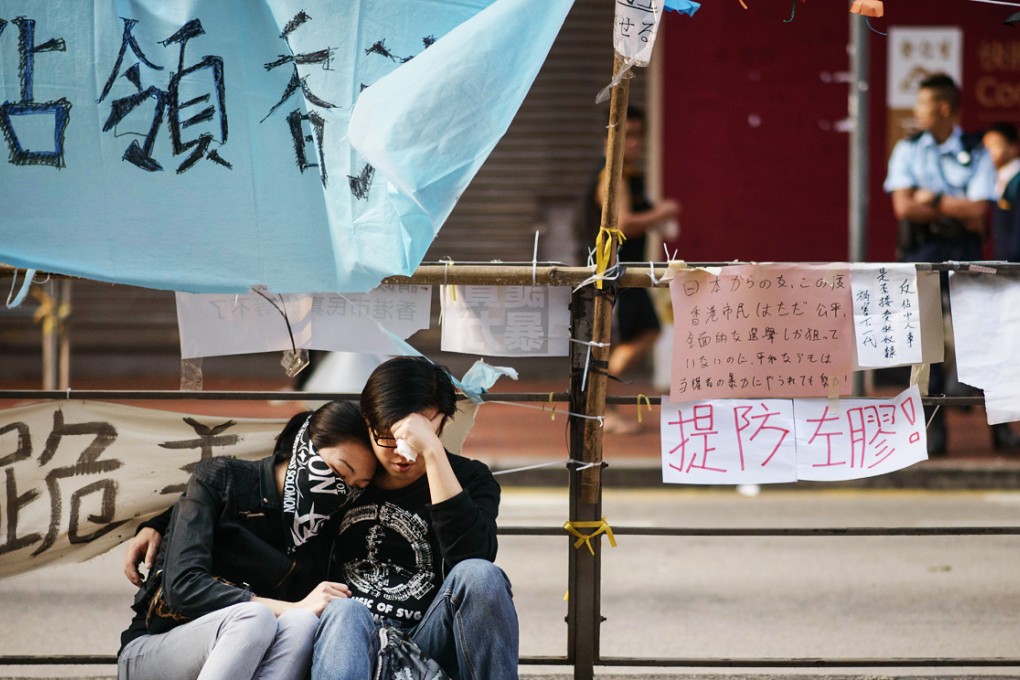New | Blockade in Causeway Bay doing a world of good despite criticism, some Hongkongers say

Occupy Central protesters have held up traffic on major roads in Causeway Bay for more than two weeks – but to some commuters and pedestrians, the blockade is actually a welcome addition.
Over the past few days, residents and workers passing through the occupied parts of the district have enjoyed the fact they have more space to walk in, the air is cleaner and there are more activities that engage the public.
Thomas Lam, 35, and Tracy Leung, 33, walked around the occupied area of Yee Wo Street, near the Sogo shopping mall, while a maths tutorial was being held in the streets.
“These initiatives are a good thing. In fact, we can also enjoy more the public space and there are less tourists,” said Lam, who described tourists as “definitely more annoying than the protesters”.
Since the occupation of Causeway Bay started on September 29, protesters have been organising public lectures on Hennessy Road, which was closed to traffic until this morning.
The protesters on October 8 also started holding free tutorials for the general public on Maths, Chinese, English and other subjects, at Yee Wo Street.